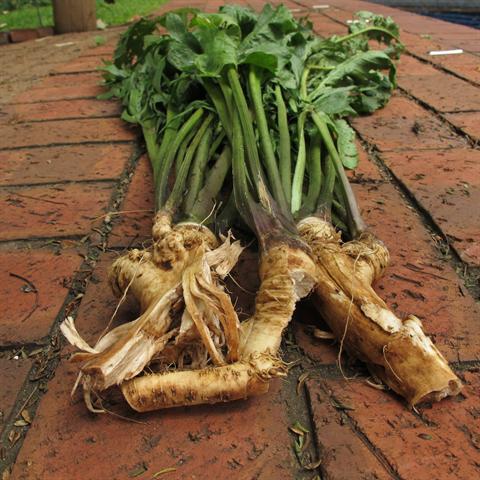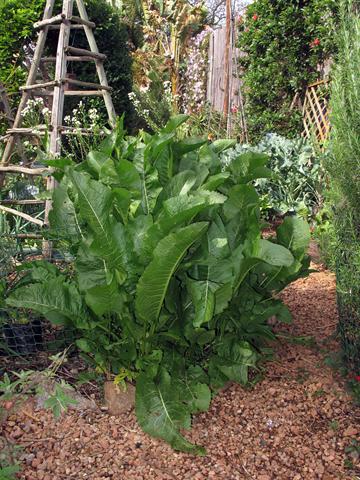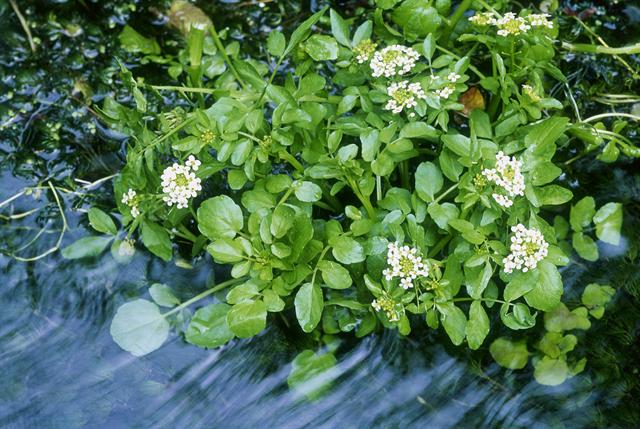Add a warming bite to your winter dishes with veg with a distinctive peppery flavour
HORSERADISH

For more than three centuries horseradish has been used for everything from relieving back pain to an aphrodisiac. It’s a perennial member of the mustard family and both the roots and leaves are edible.
Planting pointers: Horseradish grows best in moist, well-drained soil, in full sun to dappled shade. It can be invasive if left unharvested. After harvesting, leave a few roots in the ground for next spring. In frosty areas, the leaves will die back during winter but new shoots will come up in spring.
Growing tips: Grow in spring from seedlings or fresh root. Choose a piece of root about 20cm long and about as thick as a pencil. Bury it at an angle with the narrow end 10cm deep and the thicker end 5cm below the surface. Keep it well watered until shoots appear. Leave it for the first season to build up its root system. Once big enough, it will spread its roots underground and new shoots will start sprouting around the base of the plant.
Harvesting and cooking: Harvest the roots in early winter or after the first frosts have passed and process as soon as possible. These roots make a far stronger horseradish sauce than any commercial varieties. Pick young leaves for salads and stir-fries.
ROCKET

Rocket, a fast-growing annual with peppery, edible leaves, seeds and flowers, is native to Mediterranean countries.
Planting pointers: Hardy rocket likes full sun or semi-shade during the hot summer months. It prefers moist, rich earth and will go to seed on hot, dry soil. If you leave it to self-seed, you’ll always have it growing.
Growing tips: Sow seed in situ and keep moist until they germinate. You don’t need to thin seedlings out as the stronger plants will crowd out the weaker ones. In hot weather, successive sowings will ensure a continual harvest.
Harvesting and cooking: Start picking the outside leaves about four weeks after sowing; when it goes to seed the leaves taste much hotter. Rocket adds a mustardy bite to salads and makes a tasty bed for grilled fish or chicken breasts. Older rocket with tougher leaves can be added to stir-fries and Asian soup dishes. Rocket pesto is a delicious way to use the harvest bounty. Crush the peppery seeds and add to salad dressings or infuse in oil.
WATERCRESS

Hailing from central Asia and Europe, watercress is one of the oldest leafy greens eaten by humans.
Planting pointers: This hardy but short-lived perennial will only grow if its roots are in water or very moist soil. It likes being shaded from the hot afternoon sun in summer.
Growing tips: Sow seed in situ along the edges of a pond, or buy a bunch of watercress and pop the cut ends into a bottle of water. Place it on a sunny windowsill and change the water every day until the roots grow.
Harvesting and cooking: Pick young leaves before flowering. Nutritious watercress can be eaten raw in salads, sandwiches and wraps, cooked until just wilted in soups and stir-fries, made into tasty pesto, added to quiches and muffins and chopped into egg dishes. Grind the seeds for a fresh peppery mustard
